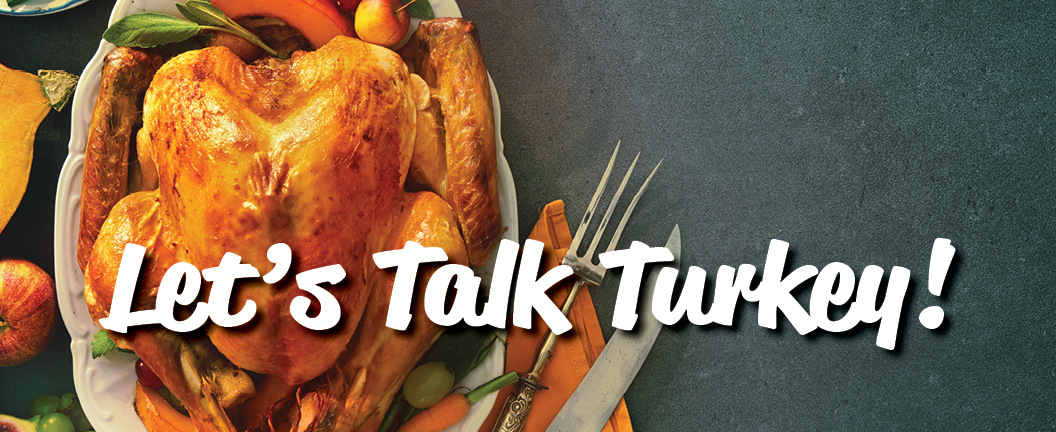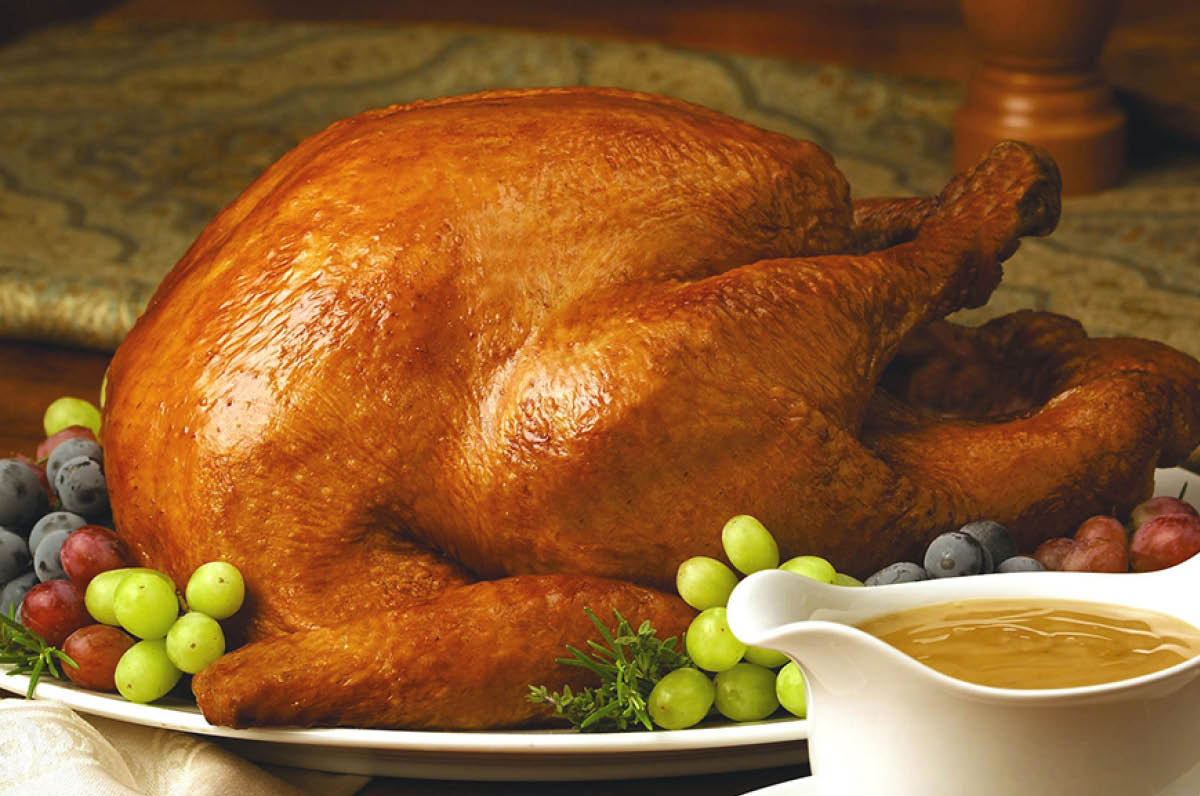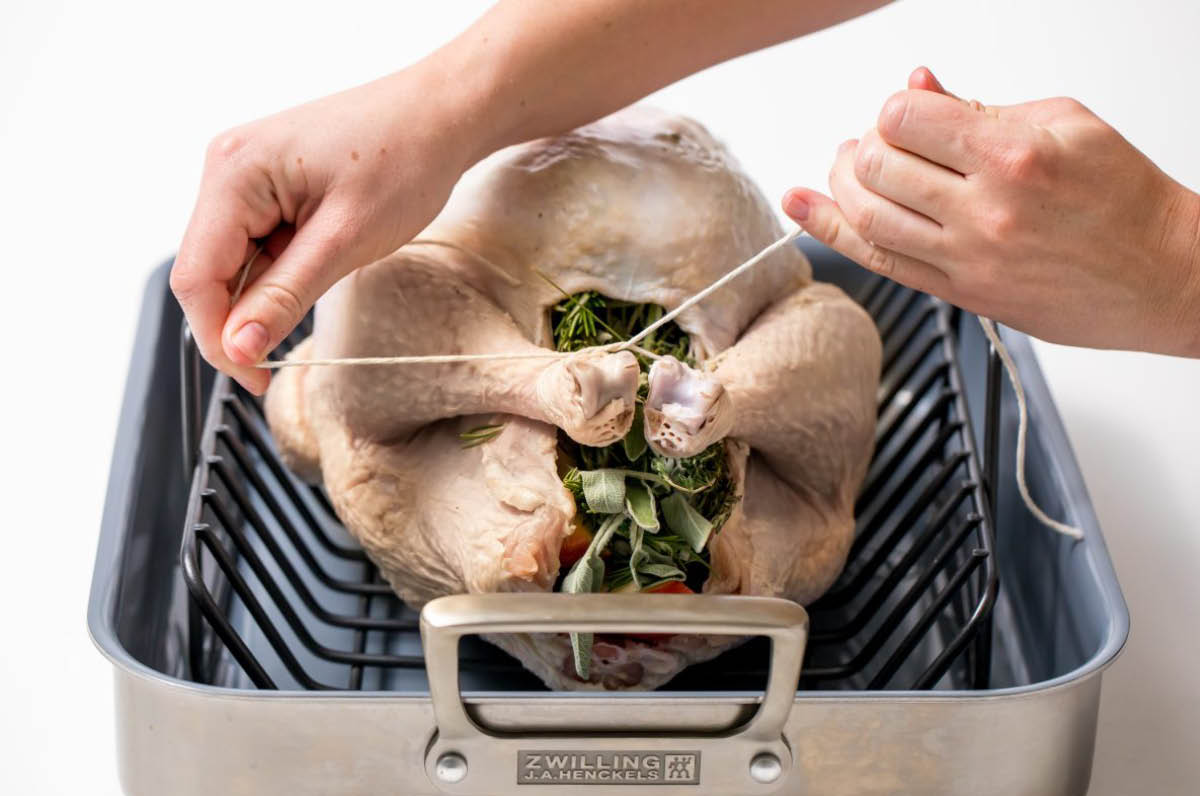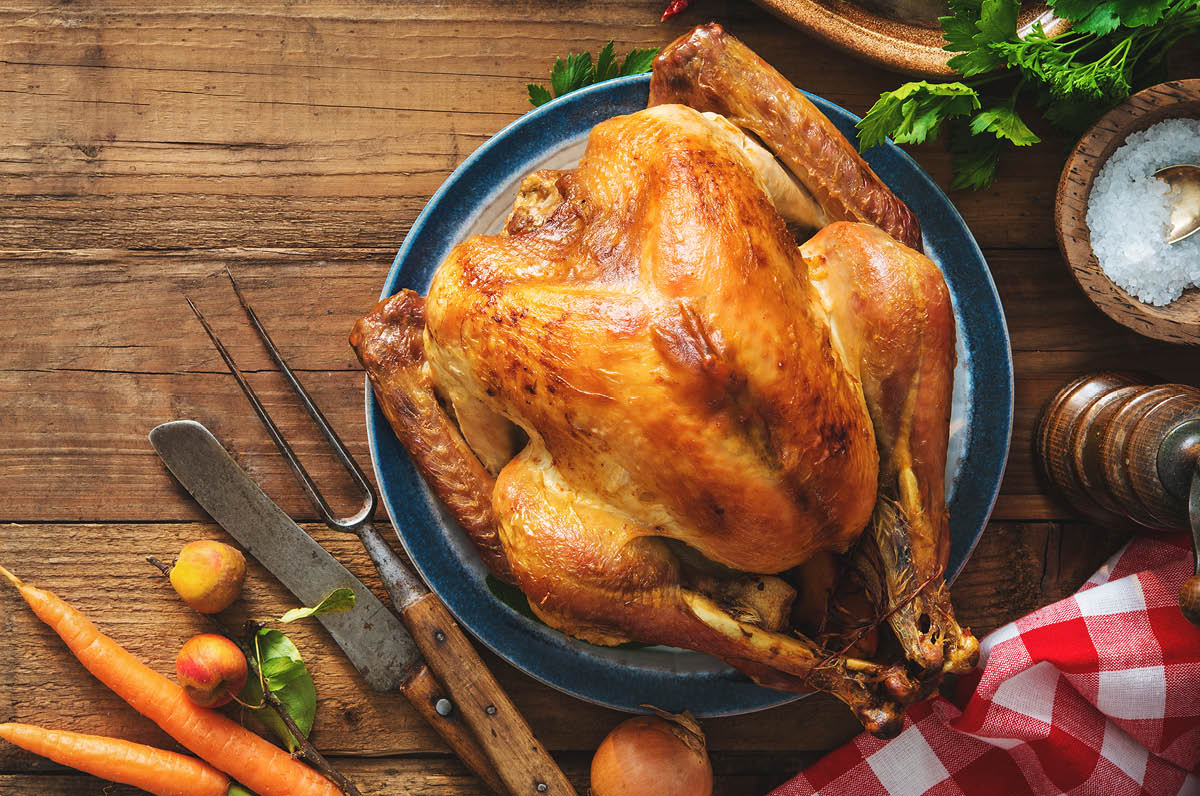
For most, the centerpiece of the Thanksgiving meal is turkey. Unless you are a seasoned professional in the art of turkey baking, you may have some questions. Below you'll find common questions about all things turkey answered.
As the centerpiece of your Thanksgiving dinner, the choice of your turkey is an important one. If you are undecided whether or not you want a fresh or frozen turkey, consider some of the following to help you decide.
As the centerpiece of your Thanksgiving dinner, the choice of your turkey is an important one. If you are undecided whether you want a fresh or frozen turkey, consider some of the following to help you decide.
To thaw a frozen turkey, it is recommended to thaw it in the refrigerator. You also can safely thaw it in a cold-water bath, for this method place your turkey in a large water safe vessel and cover the turkey with cold water. The water will need to be changed every 30 minutes. Find the USDA's thawing guidelines here.
Frozen Turkeys are usually cheaper than fresh, the longer a turkey is frozen the quality and amount of texture and juiciness will decrease.
Fresh turkeys are more moist and tender after cooking and have an overall better quality but are less readily available. BUT you can pre-order yours here!

Trussing a turkey is like wrapping a present. It makes a pretty presentation but takes some extra time (cooking time).
Close the neck flap by folding the extra skin around the neck over itself and secure with two skewers.
Stuff the turkey before you truss it if you are planning on stuffing.
Turn the turkey breast-side up. Tuck the tips of the wings firmly under the shoulders. This keeps the tips from scorching and helps creates a flat surface to stabilize the turkey when you're carving it later.
Turn the turkey so the opening of the chest cavity is facing you. Cut a long piece of kitchen twine and position the mid-point between the turkey legs. Bring the legs together and wrap the twine around them a couple of times. Tie firmly and cut off most of the excess twine.

Brining will add extra juiciness to your turkey and the flavor possibilities are endless. There are two different methods you can choose, wet or dry and each will require time and space.
To wet brine a turkey you'll need fridge space, a pot, cooler, or vessel with a lid that will fit a whole turkey.
Place raw turkey into the brining vessel. In a saucepan heat one quart of water and pour in one cup of kosher salt and any other aromatics you wish to use. Stir until combined, remove from heat and allow to cool completely.
Pour solution over the turkey and add an additional 3 quarts to the pot or until the turkey is completely submerged.
Cover and refrigerate for 12-24 hours. If the turkey floats, weigh it down with a heavy pan. After 12-24 hours pour brine into the sink, rinse turkey and pat dry.
A dry brine is great because it's a lot less messy, uses less salt and works essentially the same way as a wet brine.
Reserve a space in your fridge for the turkey to chill out for a while as the brine does its job. Pat your turkey dry and gently separate the skin from the meat.
Mix 3 tablespoons of kosher salt with 1 1/2 teaspoons of dry herbs of choice and 3/4 teaspoons black pepper together. Rub 2 tsp under the legs, 4 tsp on the breasts, 2 tsp in the cavity saving a small amount to be sprinkled on the skin.
Tuck wings back behind the breasts and allow bird to dry brine for at least two days. Roast as usual.

You've brined the bird and trussed the bird and now it's showtime, let's roast the bird.
Personally, we like to cook the stuffing outside of the bird because once the stuffing comes to temp the meat will be overdone. Try stuffing the turkey with aromatics instead.
Adjust your oven rack so the turkey will sit in the center of the oven. Preheat oven to 325 degrees F.
Remove turkey from packaging and remove the neck and giblets from the inside the cavities of the bird. (Reserve them for gravy, if you want, or discard them). Pat the turkey very dry with paper towels.
Create an herb, garlic, and butter mixture and spread over the entire surface of the turkey. You can also spread under the skin at this point too.
Stuff and truss your turkey if you are going to do so and roast until the internal temperature of the breast reaches 165F, and the thigh 180F. If you have stuffed your bird, you will also need to temp the stuffing, it is done at 165F.
Once at temp, remove from the oven, and tent loosely with foil and allow to rest for at least 15 minutes before carving.
